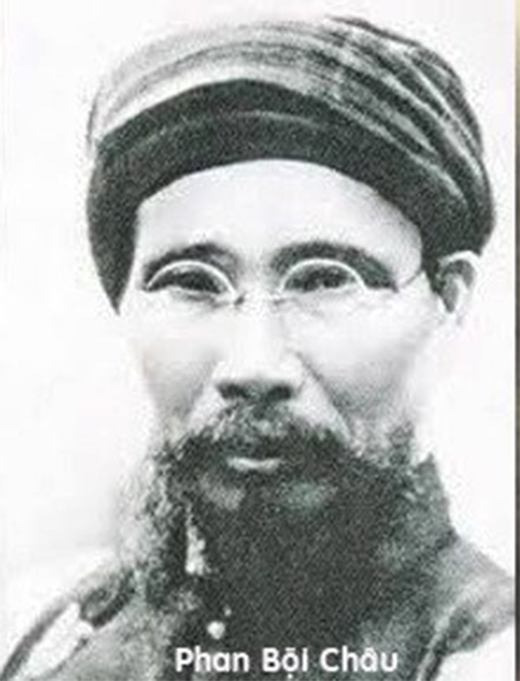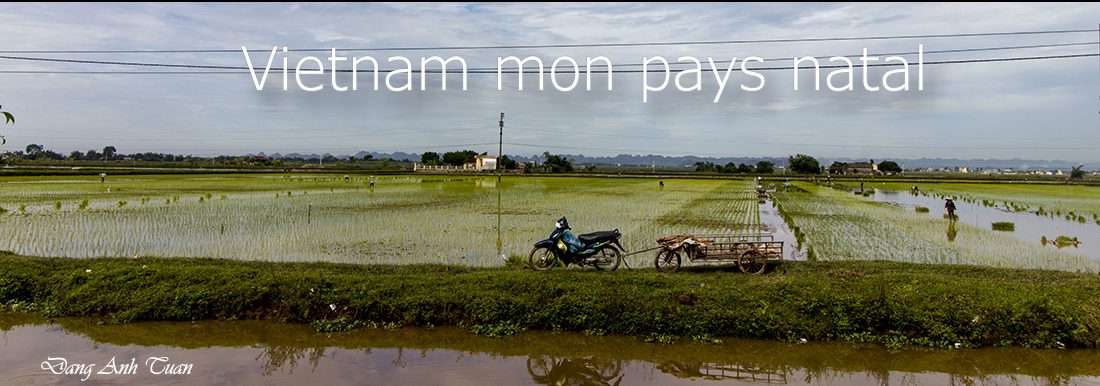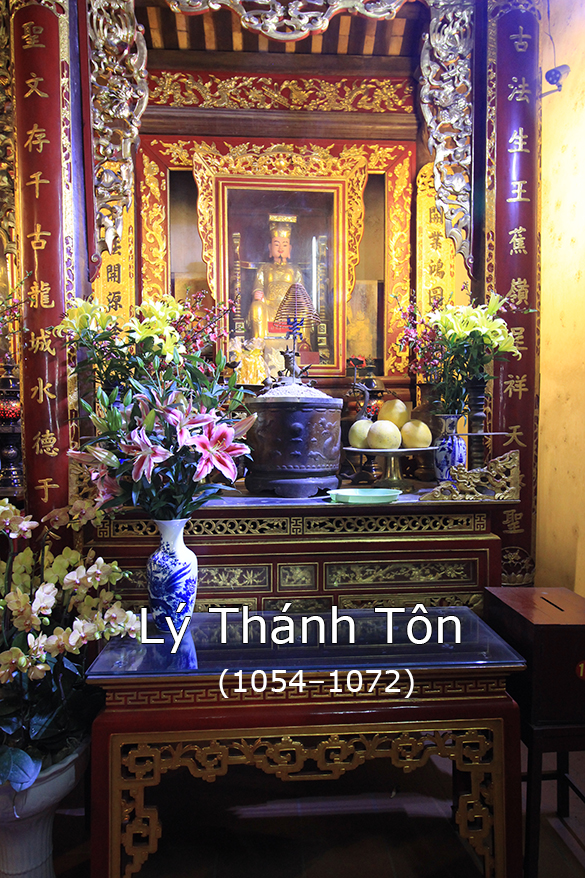Le figuier
Cây sung là một loại cây quen thuộc với chúng ta, thường sống ở các vùng nhiệt đới như ở đất nước ta. Nó được nhận diện ra nhờ các lá xanh có dạng hình mũi mác hay hình trứng, dài khoảng 5 đến 10 cm và sắp xếp theo hình xoắn ốc xung quanh cành cây. Nó được nổi bật trong thế giới thực vật qua phương thức nở hoa và đậu quả. Nó sinh ra được hai loại hoa: hoa đực (vô sinh) và hoa cái (sinh sản) nhưng các hoa cái nầy không thể thụ phấn được cần nhờ đến một loại sâu bọ như loại Blastophaga, một loại ong thật nhỏ bé của cây sung (Blastophaga psenes). Nhờ con ong cái nhỏ bé nầy mà các hoa cái mới thụ phấn và mới có nhiều quả bế (akènes) chính đây mới là những hạt li ti bé nhỏ, những quả thật sự ở trong đài hoa dưới dạng cái kén (một quả giả tròn trịa chính mùi) được trông thấy ở bên ngoài (infrutescence). Do đài hoa ôm trọn hoa cái và hoa đực ở bên trong cái kén nên chúng ta không nhìn thấy. Vì vậy chúng ta cho rằng cây sung không có hoa. Khi ong chung vào ở lổ hở (ostiole) của đài hoa thi ong bị vỡ cánh và râu nên không ra được, chỉ biết giúp hoa cái thụ phấn để có trái rồi chết khiến ta thường nghe nói có ăn được một trái sung thì ta có ăn thêm một con ong chết khiến người ăn chay không bao giờ thích ăn trái sung. Thật sự trái sung có tiết ra một loại enzyme làm tiêu tan thể xác của con ong và chế biến nó thành protein.
Cây sung thường thấy có quả chớ không thấy hoa. Phải chẻ ra làm đôi mới thấy hoa nên gọi là giống ẻn hoa (cryptogame). Người Trung Hoa gọi là “vô hoa quả”. Trong kho tàng thành ngữ tiếng Việt, cây sung thường được nhắc đến nhiều.
Chờ cho sung rụng nằm dài gốc cây.
Cây sung là loại cây có trái không mọc ở cành cây mà mọc từ gốc đến ngọn và hay thường mọc thành từng chùm ở thân cây. Bởi vậy không cần mệt phải leo trèo để hái quả, chỉ cần vói tay là được mà cũng chẳng cần đứng chi cả. Câu thành ngữ nầy dùng chỉ những kẻ lười biếng quá mức.
Ăn sung nằm gốc cây sung
Lấy nhau thì lấy, nằm chung không nằm.
Đây là một thành ngữ dùng ám chỉ một cuộc hôn nhân bị cưỡng ép, không thương mà phải lấy nhau. Dù có giấy tờ hôn thú đi nữa cũng nhất định không chịu nằm chung một giường. Mà đôi khi còn có thái độ bất hợp tác với một chính quyền, một áp lực nào của ngọai bang nên tỏ ra có chủ trương thụ động đề kháng như thời kỳ thời thực dân Pháp đô hộ bắt dân ta phải chịu các hiệp ước dưới thời vua Tự Đức.
Còn “Ăn quả vả trả quả sung” để nói không có việc tương xứng trong việc mượn trả. Muốn nói đây có một người khôn lõi và một người khờ dại để bị lừa gạt trong cuộc giao dịch. Quả vả thì rất to lớn thịt nhiều ở bên trong có hoa. Người Tây Phương thường gọi là “figue de Roxburg”. Còn quả sung thì nhỏ hơn lại tròn mà gọi là “figue sycamore”. Cả hai thuộc giống Ficus, họ Moracées. Hay là: Ăn sung giả ngái. Câu nầy ám chỉ sự lường gạt và vong ân bội nghiã vì sung và ngái hai loại quả hoàn toàn khác giống, một thứ ăn được còn một thứ không ăn được. Để chỉ người không biết điều, chỉ nghĩ đến mình mà chẳng nghĩ ai cả và ích kỷ thì dân ta hay dùng câu thành ngữ như sau:
Ăn sung ngồi gốc cây sung
Ăn rồi lại ném tứ tung ngũ hoành.
Cây sung còn tượng trưng cho người ẩn sĩ vì hoa của cây sung chúng ta biết không bao giờ thấy thường ẩn trong đài hoa. Nhắc đến biểu tượng nầy thì cũng không thể quên cụ Phan Bội Châu (1867-1940). Đây là một nhà yêu nước lớn ở đầu thế kỷ 20 trong thời kỳ Pháp thuộc. Ông bị thực dân Pháp bắt cóc tại Thượng Hải giải về nước lãnh án tử hình, mặc dù trước đó (1912) ông đã bị đối phương kết án vắng mặt. Trước làn sóng phẫn nộ của dân chúng, toàn quyền Alexandre Varenne của đảng SFIO buộc lòng nhượng bộ, đem ông về Huế giam lỏng. Từ đó ông sống ở một ngôi nhà nhỏ ba gian ở xóm Bến Ngự như nhà ẩn sĩ, bất hợp tác với chính quyền thực dân Pháp. Ông sống với một cuộc sống giản dị cho đến ngày 29 Tháng 10 dương lịch 1940. Đó là ngày ông từ trần và hưởng thọ 74 tuổi. Ông ra đi mang nhiều hoài bão, bao nhiêu tâm sự và còn để lại cho chúng ta một lý tưởng “Sống” của một chí sĩ yêu nước.
Sống tủi làm chi đứng chật trời
Sống nhìn thế giới hổ chăng ai?
Sống làm nô lệ cho người khiến
Sống chịu ngu si để chúng cười
Sống tưởng công danh, không tưởng nước
Sống lo phú quý, chẳng lo đời
Sống mà như thế đừng nên sống
Sống tủi làm chi đứng chật trời.
Le figuier qui nous est très familier est un arbre vivant souvent dans les régions tropicales comme dans le cas de notre pays. On le reconnaît grâce à ses feuilles lancéolées ou ovales de couleur verte foncée, longues de 5 à 10 cm et disposées en spirale autour du rameau. Il se distingue dans le monde végétal par son mode de floraison et de fructification. Il produit deux types de fleurs: les fleurs mâles (stériles) et femelles (fertiles) mais ces dernières ne peuvent être pollinisées sans la collaboration d’insectes du genre Blastophaga, une sorte de guêpe lilliputienne (Blastophaga psenes). C’est grâce à celle-ci que ces fleurs femelles reçoivent la pollinisation et ont plusieurs akènes qui sont les minuscules grains trouvés dans la chair ou les vrais fruits dans le réceptacle floral sous la forme d’un cocon (faux fruit ou infrutescence), charnu à maturité et visible à l’extérieur. À cause de la protection totale du réceptacle floral, on ne voit ni les fleurs mâles ni les fleurs femelles. C’est pour cela qu’on dit que le figuier n’a pas de fleurs. Lors de l’introduction de la guêpe dans ce réceptacle par la petite ouverture (ou ostiole), la guêpe se brise les ailes et les antennes. Elle ne peut pas en ressortir. Elle apporte la pollinisation aux fleurs enfermées pour donner naissance à un fruit. Elle se retrouve bloquée et meurt dans le fruit. On est habitué à dire qu’en mangeant une figue, on mange également une guêpe morte. C’est pour cela qu’une personne végétarienne n’aime pas manger la figue. La figue sécrète en fait une enzyme qui dissout le corps de l’abeille et le transforme en protéine.
On ne voit que sur le figuier les fruits mais pas les fleurs. Il faut couper la figue en deux pour pouvoir voir les fleurs à son intérieur (cryptogame). Les Chinois l’appellent sous le vocable «l’arbre sans fleurs». Dans le trésor des idiomes vietnamiens, le figuier est souvent mentionné.
Chờ cho sung rụng nằm dài gốc cây.
Dans l’attente de la chute de ses fruits, on peut s’étaler au pied du figuier.
Le figuier est un arbre dont les fruits ne poussent pas souvent sur les branches mais on les voit apparaître souvent groupés en grappes sur le tronc d’arbre ou de la racine jusqu’à la cime. Par conséquent, il n’est pas nécessaire de se lasser de grimper pour cueillir les fruits. Il suffit de tendre la main pour les prendre et de ne pas avoir besoin de se tenir debout. Cet idiome est utilisé pour désigner ceux qui sont extrêmement paresseux.
Ăn sung nằm gốc cây sung
Lấy nhau thì lấy, nằm chung không nằm.
En mangeant la figue, on doit rester au pied du figuier.
En consentant à se marier ensemble, on n’est pas obligé de se coucher dans le même lit.
C’est un idiome employé pour dénoncer un mariage forcé sans aucun amour mutuel et véritable. Malgré que le certificat de mariage soit délivré, on ne veut pas partager certainement le même lit. Mais parfois il y a aussi une attitude de non-coopération avec un gouvernement et une pression étrangère. Cela conduit à avoir une politique de résistance passive. C’est le cas de la période coloniale française où le peuple vietnamien fut obligé d’accepter des traités sous le règne du roi Tự Đức.
On se sert de l’idiome « Manger votre figue et rendre une autre » pour dire qu’il n’y a pas de correspondance parfaite entre l’emprunt et le retour. Cela veut dire qu’il y a un homme fourbe et un homme crédule qui se laisse duper dans les transactions. Les figues qui sont très grosses et charnues avec des fleurs cachées à l’intérieur, sont appelées souvent « figues de Roxburg » par les Occidentaux. En revanche, les figues qui sont plus petites et rondes, sont connues sous le nom de « figues sycomores ». Toutes les deux appartiennent au genre Ficus et sont issues de la famille Moracées. Ou bien: « Manger les figues sycomores et rendre les figues d’une autre espèce de nom ngái ». Cet idiome est employé pour faire allusion à la tromperie et à l’ingratitude parce que ces figues sont deux fruits complètement différents, l’un comestible et l’autre non comestible. Pour désigner quelqu’un égoïste qui ne connait pas le savoir-vivre et ne pense qu’à ses intérêts sans tenir compte de ceux des autres on est habitué à employer l’idiome suivant:
Ăn sung ngồi gốc cây sung
Ăn rồi lại ném tứ tung ngũ hoành.
En mangeant la figue, on doit rester assis à côté du figuier.
Une fois la consommation terminée, on ne doit pas jeter partout le reste.
 Le figuier est employé fréquemment pour désigner un ermite car on ne voit jamais la fleur du figuier qui se cache dans le réceptacle floral (ou faux fruit). En évoquant cette représentation symbolique, on ne peut pas oublier Phan Bội Châu (1867-1940). C’est un grand patriote vietnamien au début du 20ème siècle à l’époque coloniale française. Il fut kidnappé à Shanghai, ramené au Vietnam et condamné à mort malgré qu’il eût reçu auparavant en 1912 un arrêt de mort en son absence. Face à la vague de protestation de la population locale, le gouverneur Alexandre Varenne du parti SFIO fut obligé de céder en l’astreignant à la résidence surveillée à la capitale impériale Huế. Dès lors, il mena sa vie journalière comme celle d’un ermite dans une petite maison dans le hameau Bến Ngự et refusa de collaborer avec les autorités coloniales. Il choisit la voie d’une vie simple et tranquille jusqu’au jour de son décès le 29 Octobre 1940 à l’âge de 74 ans. Il nous quitta en emmenant avec lui toutes ses aspirations et ses sentiments intimes et en nous laissant surtout la façon de «se comporter» d’un lettré idéaliste comme lui à travers son poème intitulé « Vivre ».
Le figuier est employé fréquemment pour désigner un ermite car on ne voit jamais la fleur du figuier qui se cache dans le réceptacle floral (ou faux fruit). En évoquant cette représentation symbolique, on ne peut pas oublier Phan Bội Châu (1867-1940). C’est un grand patriote vietnamien au début du 20ème siècle à l’époque coloniale française. Il fut kidnappé à Shanghai, ramené au Vietnam et condamné à mort malgré qu’il eût reçu auparavant en 1912 un arrêt de mort en son absence. Face à la vague de protestation de la population locale, le gouverneur Alexandre Varenne du parti SFIO fut obligé de céder en l’astreignant à la résidence surveillée à la capitale impériale Huế. Dès lors, il mena sa vie journalière comme celle d’un ermite dans une petite maison dans le hameau Bến Ngự et refusa de collaborer avec les autorités coloniales. Il choisit la voie d’une vie simple et tranquille jusqu’au jour de son décès le 29 Octobre 1940 à l’âge de 74 ans. Il nous quitta en emmenant avec lui toutes ses aspirations et ses sentiments intimes et en nous laissant surtout la façon de «se comporter» d’un lettré idéaliste comme lui à travers son poème intitulé « Vivre ».
Bibliographie
Thái văn Kiểm: Việt Nam Quang Hoa. Editeur: Xuân Thu. Californie, USA.
Le grand Atlas botanique gourmand. Editions Atlas. 2015
Bill Laws : 50 plantes qui ont changé le cours de l’histoire. Editeur: Mathieu Biberon 2013


